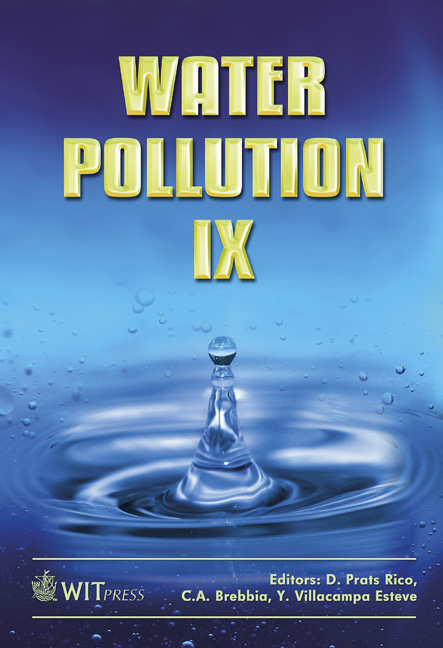The Degradation Of Phenol Derivates From Wastewaters By Electrochemical Treatment
Price
Free (open access)
Transaction
Volume
111
Pages
10
Page Range
435 - 444
Published
2008
Size
535 kb
Paper DOI
10.2495/WP080421
Copyright
WIT Press
Author(s)
A. Bebeselea1, F. Manea1, C. Radovan, G. Burtica, C. Teodosiu, A. Pop, C. Proca & I. Corb
Abstract
A group of carbon-based electrodes, i.e., glassy-carbon (GC), boron doped diamond (BDD), expanded graphite-polystyrene composite (EG-PS), expanded graphite-epoxy composite (EG-Epoxy) and expanded graphite-carbon nanofiberepoxy composite (EG-CNF-Epoxy) electrodes were investigated for electrochemical degradation of 4-chlorophenol (4-CP). Based on the investigated electrochemical techniques, e.g., cyclic voltammetry (CV) and chronoamperometry (CA), the operation conditions and the electrode suitable for electrochemical oxidation of 4-CP were selected. In addition, multiple pulsed amperometry (MPA) was applied for the in-situ electrochemical cleaning of the electrode surface to improve the electrode efficiency. The BDD electrode exhibited the best features related to the 4-CP electrochemical degradation efficiency. Keywords: wastewater, electrochemical degradation, 4-CP, carbon-based anodes. 1 Introduction The phenol derivates are toxic and non-biodegradable organic compounds included in the list of priority phenols, which are used/produced in several industrial processes, being commonly used as preservatives, disinfectants, in pulp processing, in the manufacture of pesticides and intermediars [1–4]. The choice of wastewater treatment method depends on the treatment performance and economic component. Due to the treatment of industrial
Keywords
wastewater, electrochemical degradation, 4-CP, carbon-based anodes.





